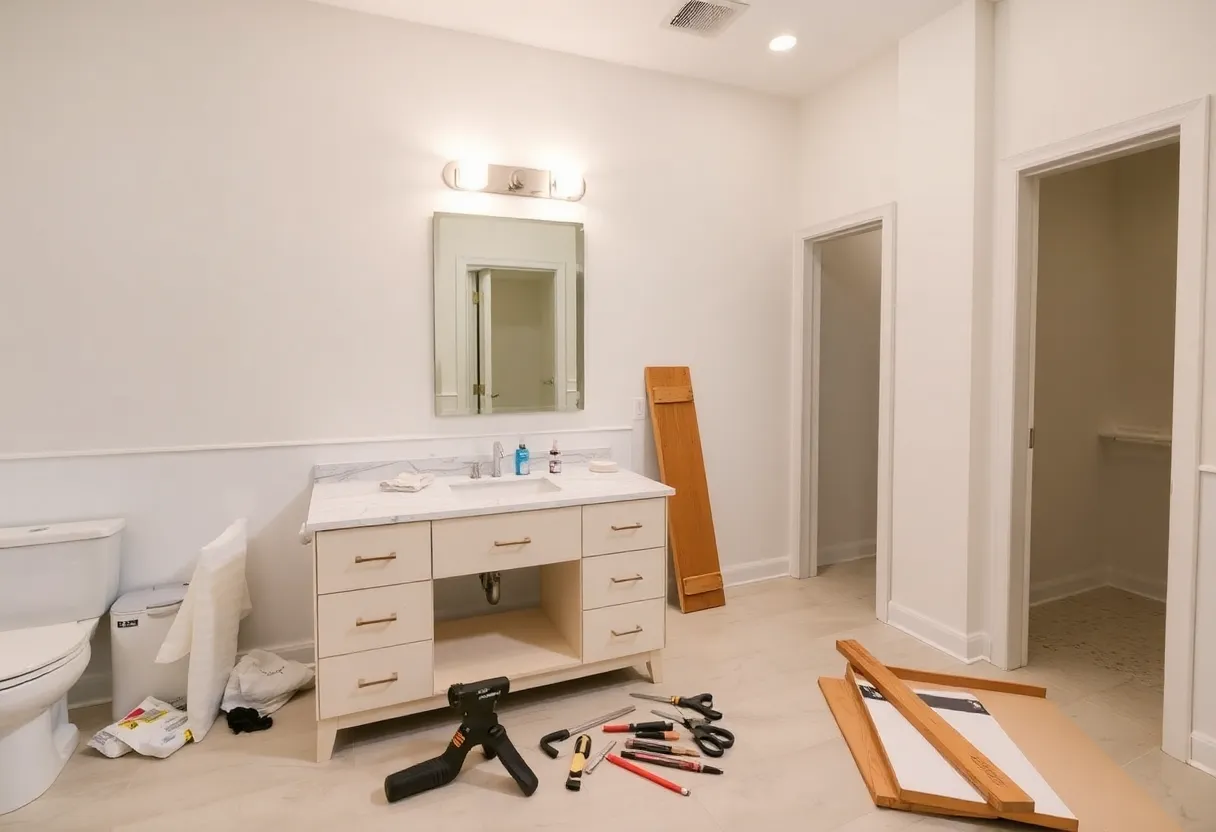Step-by-Step Guide to Bathroom Vanity Installation for a DIY Refresh
Updating your bathroom can be an exciting project, and installing a new bathroom vanity is often one of the most impactful changes you can make. A well-chosen vanity can enhance storage, improve functionality, and elevate the aesthetic appeal of your space. This step-by-step guide to bathroom vanity installation will help you navigate the process efficiently and safely, ensuring a seamless transition from old to new.
Understanding Your Bathroom Vanity
Before beginning the installation process, it’s essential to understand the components of a bathroom vanity. The vanity typically consists of a cabinet, a countertop, and a sink. Some vanities come pre-assembled, while others require assembly on-site. Familiarizing yourself with these parts will streamline the installation process.
Choosing the Right Vanity
Measure your bathroom space accurately before selecting a vanity. Consider the overall size and style of the room. The height, width, and depth of the vanity are all essential factors. Additionally, think about the storage needs and the number of sinks required. Take into account the plumbing location to ensure compatibility.
Gathering Necessary Tools and Materials
Before beginning your bathroom vanity installation, gather all the required tools and materials to avoid interruptions. Here’s a checklist to consider:
- Measuring tape
- Level
- Drill and drill bits
- Screwdriver
- Plumber’s putty
- Adjustable wrench
- Caulk and caulking gun
- Bucket and towels for any spills
- New vanity, countertop, and sink
Step 1: Preparing the Space
Start by clearing out the area around the existing vanity. Remove any items from drawers, shelves, and countertops. Turn off the water supply to prevent any accidents. Detach the old vanity by unscrewing it from the wall and carefully disconnecting the plumbing.
Removing the Old Vanity
Use a socket wrench to disconnect the water supply lines and drain pipes. If the old vanity is glued to the wall, a utility knife may be helpful to cut through the caulk. Lift the old vanity out carefully, ensuring you don’t damage the surrounding areas.
Step 2: Preparing the New Vanity
Set your new vanity in place to ensure it fits correctly in your bathroom. It’s ideal to perform this check before securing it permanently. Make sure it’s level. If necessary, use shims to adjust the height and achieve a level surface.
Assembling the Vanity (if required)
If your vanity comes unassembled, follow the manufacturer’s instructions precisely. Ensure all screws and parts are properly tightened to establish a sturdy structure. Take note of the sink and faucet installation provisions.
Step 3: Installing the Vanity
Once the vanity sits properly, anchor it to the wall. This may involve drilling into wall studs for stability. Use a level during this process to confirm the vanity is perfectly aligned.
Securing the Vanity
Attach the vanity to the wall using screws. Make sure to choose the right screws that can support the weight of the vanity. Check it thoroughly to ensure it’s secure.
Step 4: Installing the Sink and Countertop
If your vanity is designed with a separate countertop, place it on top of the vanity now. Apply an appropriate adhesive or silicone sealant as per the manufacturer’s instructions. Allow the adhesive to cure as specified.
Connecting the Sink
Follow the sink manufacturer’s instructions for installation. Apply plumber’s putty around the edge of the sink to create a watertight seal. Place the sink in the cutout of the countertop, ensuring it’s flush. Secure as instructed.
Step 5: Plumbing Connections
Reconnect the plumbing to your new sink. Attach the hot and cold water supply lines to the corresponding inlets on the sink. Then, connect the drain assembly from the sink to the wall’s drain pipe.
Testing the Connections
Turn on the water supply to check for leaks. Let the water run for a minute, and inspect both the supply lines and drain to ensure no leaks are present. If any are found, tighten connections as necessary or replace washers.
Step 6: Finalizing the Installation
To complete the bathroom vanity installation, apply a bead of caulk along the edge where the countertop meets the wall. This will prevent water damage and mold growth. Smooth the caulk with a wet finger to create a neat finish.
Final Adjustments and Cleaning
Check the installation once more for level and security. Clean any excess adhesive or caulk. Replace all the bathroom accessories you previously removed. Make sure to give the area a thorough cleaning to complete the refresh!
Conclusion
Installing a bathroom vanity can certainly enhance the functionality and aesthetic of your space. Following this step-by-step guide to bathroom vanity installation ensures a successful DIY project that can elevate your bathroom. With careful planning, the right tools, and attention to detail, your new vanity will provide both beauty and utility for years to come.









